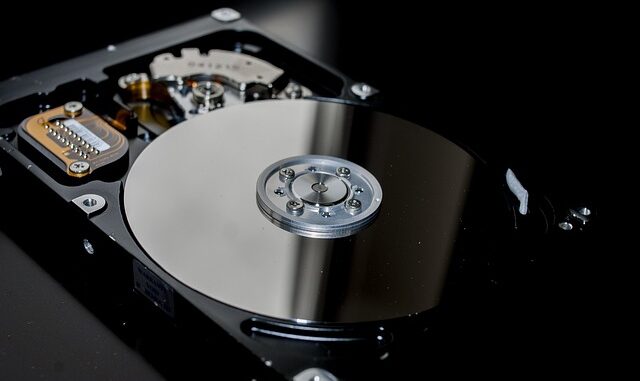
Summary
Keepit expands its SaaS backup footprint with support for Atlassian and Okta, enhancing intelligent automation with anomaly detection and planned automated restores. The company aims to support hundreds of SaaS apps by 2028, addressing the growing need for robust SaaS data protection. Keepit’s unique approach, including its own data centers and a Domain-Specific Language, positions it as a leader in cloud-to-cloud backup.
Protect your data with the self-healing storage solution that technical experts trust.
** Main Story**
Okay, let’s talk about Keepit. You might’ve heard of them; they’re a SaaS backup provider based out of Denmark. What’s interesting is how aggressively they’re expanding their reach and capabilities in what is, let’s face it, a pretty crowded market.
Specifically, they’re adding support for Atlassian’s Jira and Confluence. Plus, they’re bringing Okta’s access management tool into the fold. Of course, they already support the big guys, like Microsoft 365, Salesforce, and Google Workspace. It’s a pretty clear signal that they’re serious about providing comprehensive data protection no matter where your critical SaaS applications live. This really reflects how SaaS is becoming the operating system of modern businesses.
Expanding the SaaS Universe
Keepit’s really going all-in on broadening its support for SaaS applications. They understand that modern enterprises don’t just rely on a couple of platforms; they’re using a whole ecosystem of tools.
Think about it: Jira and Confluence. Those are essential for development workflow and internal knowledge bases, right? Well, Keepit wants to make sure they’re protected. And get this: they’re aiming to support hundreds of SaaS apps by 2028. HR, finance, sales, production… you name it. The goal? Complete data protection across your entire SaaS landscape. Quite a goal I have to admit.
Smarter Backups: Automation is Key
But it’s not just about quantity, it’s about quality. Keepit’s also focusing on intelligent automation. For instance, they’ve rolled out anomaly detection. They leverage their massive data pool to spot weird trends and potential problems. By comparing data snapshots and analyzing sizes, they can flag things like sudden data drops. This is important; it could be an early sign of data loss or even a security breach! It’s all about being proactive, and frankly, that’s what you want in a backup solution. And it gives you peace of mind.
They’re also working on a threat library (partnering with someone on this) to scan backups for external threats. Smart move, I think. Plus, they’re developing intelligent automated restores that are tailored to specific recovery point objectives (RPOs) and recovery time objectives (RTOs). Which, if you’ve ever dealt with a major data recovery, you know that streamlining that process is a huge win.
What Makes Keepit Different?
Here’s something that really sets Keepit apart: they own and operate their own data center capacity. Think about that for a second. Your backups are completely separate from your source SaaS applications, and that’s huge for security and resilience.
They’ve got multiple data centers spread out geographically; each one is treated as its own sovereign availability zone. And no data transfer between regions without your explicit approval. That’s serious data sovereignty. If your business operates globally and you’re dealing with all kinds of data protection regulations, that’s a big deal. You can sleep a little easier knowing that.
Plus, their pricing model is pretty straightforward. It’s based on the number of seats you have, not on ingress, egress, or capacity. That means no hidden costs, and it’s easy to budget for your SaaS backup needs. Unlimited “always-hot” data storage? Yes, please.
The Future is in the Cloud
Let’s be honest, the rapid adoption of SaaS has created a bit of a blind spot when it comes to data protection. A lot of companies just assume their SaaS providers are handling backups. Big mistake. Keepit’s stepping in to fill that gap, offering a platform designed specifically for cloud-to-cloud backup and recovery. With their focus on expanding SaaS application support, intelligent automation, and secure infrastructure, they’re definitely positioning themselves as a leader in the future of SaaS backup. It will be interesting to see what other companies do to try and keep up.


Keepit’s focus on anomaly detection and threat libraries highlights a proactive approach to data protection. How effective are these measures in preventing data breaches versus simply mitigating damage after an event? What level of sophistication can we expect from these AI-driven security features in the future?
Great question! The effectiveness of anomaly detection really hinges on the sophistication of the AI and the breadth of data it analyzes. While complete prevention is difficult, early detection significantly minimizes damage. I think we will see AI driven detection becoming a lot more advanced as machine learning improves. It is likely going to be essential for robust SaaS data protection!
Editor: StorageTech.News
Thank you to our Sponsor Esdebe
Keepit’s focus on supporting hundreds of SaaS apps by 2028 raises interesting questions. How will they ensure consistent data protection quality across such a diverse range of applications, considering the unique data structures and APIs of each platform?
That’s a fantastic point! Maintaining consistent data protection across diverse SaaS apps is definitely a challenge. Keepit employs a Domain-Specific Language designed to handle the nuances of each platform’s data structures and APIs. This allows for tailored protection strategies and ensures data integrity across the board. I think that dedicated language will be very important for consistent protection!
Editor: StorageTech.News
Thank you to our Sponsor Esdebe